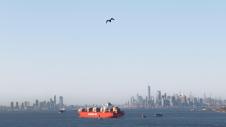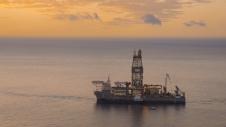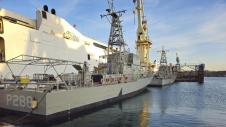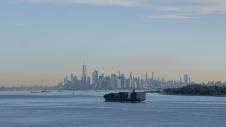In retrospect, 2022 has been a good year in many respects: with Covid19 in the rear-view mirror, most of the world got its life back with people resuming old lifestyles and business travel reborn again. Unfortunately, supply chains have not always managed to catch up with the recovery and having been stretched to one end at the onset of the pandemic, in 2022, they were caught with the opposite problem of excess inventory and prompt supply of raw materials and primary products. And, while the world was struggling to catch up with the new reality, Putin’s invasion of Ukraine added a profound energy dimension to the crisis that the world had not seen since the 1970s and the Oil Embargo.
While supply chain disruptions and the high energy prices have been the two main global themes of 2022, several smaller parallel narratives have only been amplifying the repercussions of the two overarching themes of the year:
- Piling on years of accommodating monetary policy that only became more accommodating as a response to Covid19 economic policy, central banks embarked on a fast and furious policy of ramping up interest rates in an attempt to nip in the bud incipient (transitory?) inflation,
- international trade confrontations (i.e. US semiconductor export limits to China) and the general shift of Western strategy of collectively acting to contain China’s expansionary “divide and conquer” strategy on the global stage, and
- and China’s go-alone unorthodox “zero Covid” policy with its recent gargantuan U-turn have only exacerbated logistic supply disruptions (i.e. port lockdowns, etc.) and likely will only get things worse in 2023 as millions of Chinese are expected to Covid and many factories are expected to be slow producers.
These themes have been upending developments in many industries and sectors in 2022, and not just with the maritime industries. Stock markets globally have had their worst year in more than a decade, as low interest rates took the wind off high-flying technology stocks and made leverage and short investing more expensive; on the other hand, global macro hedge funds have had the best year in more than a decade as market dislocations allowed for exploiting macro trends (i.e., rising interest rates, a political / fiscal crisis in the UK of all things, etc.) Fossil fuel companies, too, had the best year in almost a decade with eye-popping profits, while investing in renewables has strongly been catalyzed by the usual incentives such as high energy prices (and some government subsidies, too!)
Thus, the fact that 2022 has been a unique year for the maritime industries is not out of the extraordinary:
- The containership market: as many were expecting, the rally in the containership market, especially for large trans-ocean trades, has come to a halt; a great deal of the Covid19 rally was induced by supply chain disruptions (at some point, almost 10% of the world’s large containership vessel fleet was awaiting at anchor outside port limits in Long Beach / Los Angeles for space at a dock to discharge). Presently, shipping a container on a prime route from China to North America is quoted at appr. $2,000 / teu (it was $18,000 / teu a year ago); however, smaller containers and regional markets have been holding better, as they are more immune to cutthroat competition. As AP Møller-Maersk’s exiting CEO Mr Søren Skou stated in a recent interview with the Financial Times: “Trade liberalisation has come to a stop and in some years it has gone backwards . . . Maybe we will see more regionalisation, which isn’t bad for our business. Globalisation has matured.”
- The tanker market: while OPEC production quotas have traditionally been the main driver for the prospects of the tanker market, in 2022, it was all about Russia! With impending sanctions on Russia energy exports, trading routes and relationships have been abruptly upended — generally increasing ton-mile demand (cargo is being moved further), which means higher tanker demand, which translates to higher freight rates, ceteris paribus. However, while increased ton-mile demand may be a “model-able” input, the uncertainty (of higher impact events such as) the sanctions, their implementation, timing, obtaining insurance coverage, etc. now drive the state of tanker freight rates; and, the tanker freight rates have been strong! Aframax tankers handling Russian cargo had their best rates in a decade with freight rates in excess of $100,000 pd, while demand for products tankers (i.e., for gasoline, diesel, etc.) was not far behind. Further, as the Western world was facing the prospect of a freezing winter, LNG tanker rates skyrocketed to almost $500,000 pd (having made as little as $25,000 pd a year ago, and having a daily OpEx of $22,000 pd).
- The dry-bulk market: while 2022 was overall a profitable year, many dry-bulk shipowners would have fonder memories of 2021 when dry-bulk rates established a multi-year high. Although demand for commodities (the typical cargo of a dry-bulk vessel) has been strong in 2021, geo-political and macro- events affected the dry bulk trade (i.e., grain exports out of the Black Sea, Chinese steel-mill and factory lockdowns due to Covid19, etc.) All in all, it has not been a bad year, and especially when compared to market troughs of 2013 and 2016 (when dry-bulk rates for Capesize vessels were $2,000 pd), 2022 was a damned good year at more than $20,000 pd (but lower than 2021 peak at $55,000 pd)
- The offshore drilling market: after years of moribund performance, the offshore drilling market has shown again signs of life. However, there has been extreme hesitance from oil majors to commit multi-billion dollars in fixed costs for new exploration, and the price of crude exceeding $100/bbl temporarily did not appear enticing enough for the development of new projects. Among cries for price gauging at the pump at the gas station and calls for windfall tax on their (admittedly, 2022 astronomical) profits, oil companies have defaulted to a much beloved Wall Street strategy these days, rewarding their shareholders with dividends and share buybacks instead of investing in new projects. There have been few new investments (especially in the US Gulf / Gulf of Mexico), and most of the investment has been into squeezing the last drop from existing, older and abandoned wells instead of drilling new holes, whether offshore or ashore (shale oil). Given that the offshore market has been structurally tonnage-oversupplied, increased offshore activity in 2022 resulted in higher utilization rates and not necessarily in higher daily rates, as there has been precious little pricing power in a market where mothballed offshore vessels were getting slowly back into the market (at any rate, which was still higher than rusting idly at some waterfront.)
- The Jones Act and American flagged marine market: a blessed year overall as demand for grain and coal exports was strong (due to geo-political and macro- events), and hopper barges have seen their rates increase multifold from precious years. And, with a strong overall US economy and movement of secondary cargoes for construction, infrastructure, energy, etc., compounded with market dislocations, such as low water levels in the Mississippi River especially around Nashville, TN, the inland market has been very strong. Actually, the critical bottleneck has been finding and retaining seafarers and deckhands, and there have been reports of large operators having part of their fleet idling because not being able to source crewing. The coastal and blue water segment of the Jones Act market had a better year consequentially (which it could not be otherwise given that 2021 was rather bad), but given the all-time high US energy exports in 2022, tanker vessels from the international market (rather Jones Act tanker and tank barge vessels) were the primary beneficiaries of the strong energy markets.
Looking into 2023, one has to be very cognizant of geo-political and macro- events. While supply and demand, whether for cargoes or tonnage, will be crucial as always, “external” to-the-shipping industry events are likely to drive the market the most in the coming year, either favorably or adversely, and with a much higher impact than conventional supply and demand considerations. Logistics chains (with shipping being part of it) are already stretched, as they are the energy markets, and as such, even lesser geo-political and macro- events may have a disproportional impact on the shipping market. And, while (financial, etc.) markets abhor uncertainty, the maritime industry generally thrives and financially benefits from times of high uncertainty; while geo-political macro- events could move the maritime industry in either direction, the already inherent high uncertainty tends to predispose the market for a generally good year looking into 2023.
* Basil M Karatzas is the CEO of Karatzas Marine Advisors & Co., a shipping finance advisory, marine appraisals and marine surveys and shipbrokerage firm, based in New York, USA.








